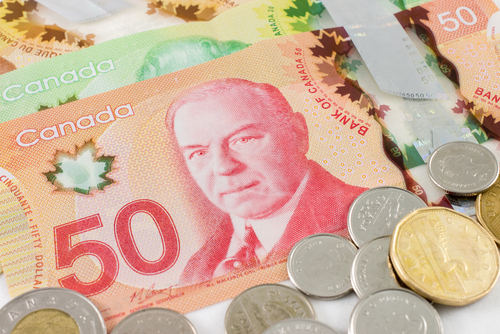Business and Economy
Loonie rises after five losing sessions, traders look to GDP data, Fed meeting
TORONTO — The Canadian dollar was higher Tuesday following a series of sharp declines as traders looked to see how the Canadian economy performed during November.
The loonie was up 0.03 of a cent to 80.26 cents US following five, straight sessions of declines that have left the loonie as the worst performing currency, down almost seven per cent year to date.
Falling oil prices and a surprise interest rate cut by the Bank of Canada have weighed heavily on the currency. The loonie has also lost value amid speculation that the central bank may move further after cutting its key overnight rate by a quarter-point last week to 0.75 per cent.
“The market is pricing in a 16 per cent chance of an interest rate cut at the March meeting and a 68 per cent probability of a cut within the next year,” observed Camilla Sutton, Chief FX Strategist, Managing Director, Scotiabank Global Banking and Markets.
“We expect BoC policy to introduce additional volatility into the Canadian dollar.
”
The plunge in oil prices has weakened the Canadian economy but this likely won’t be reflected in November gross domestic product figures coming out on Friday. Statistics Canada is expected to report that GDP rose by 0.1 per cent during the month.
Oil prices started to collapse at the end of that month after Saudi Arabia ruled out production cuts. Since then, oil has plunged about 40 per cent but seems to have found some stability around the US$45 a barrel mark.
Reflecting that rapid drop in prices, TD Bank on Monday downgraded its economic forecast. The bank now expects the Canadian economy to grow by two per cent this year compared with its expectation in December for 2.3 per cent. TD said it also expects the Bank of Canada to cut its overnight rate by another quarter of a percentage point in March.
Other economic events of note this week include the U.S. Federal Reserve’s scheduled announcement on interest rates on Wednesday.
Traders will also take in data on U.S. fourth quarter economic growth on Friday. Economists generally expect that U.S. GDP grew at an annualized rate of 3.1 per cent, down from a five per cent pace in the third quarter.
On the commodity markets, March oil gained 29 cents to US.
44 a barrel.
February gold gained $2.40 to US$1,281.80 an ounce and March copper slipped four cents to US$2.50 a pound.






















